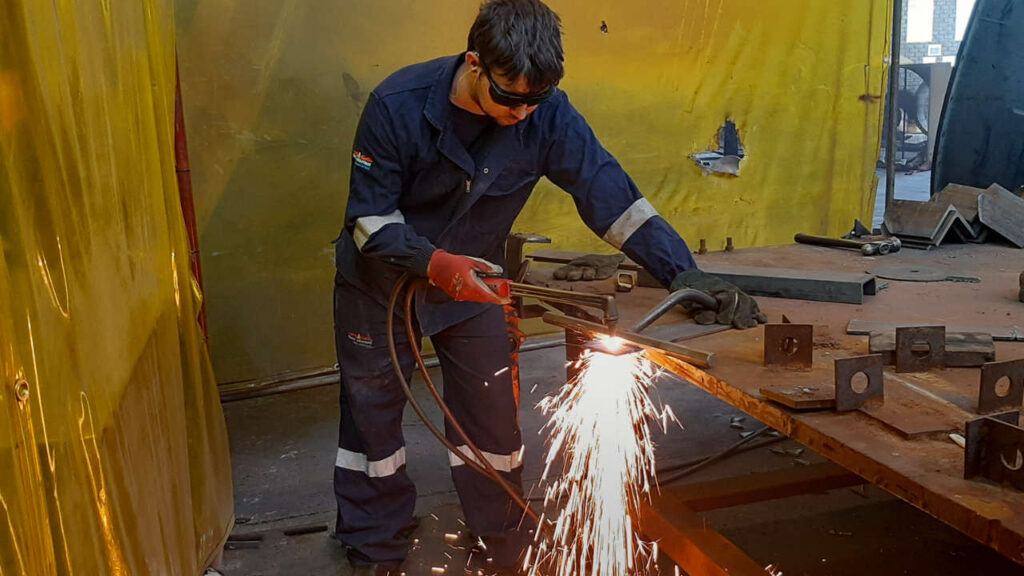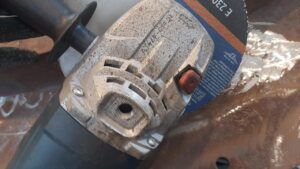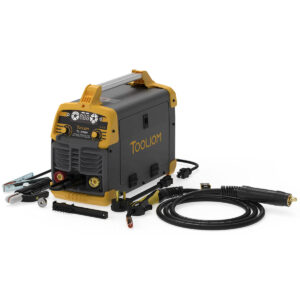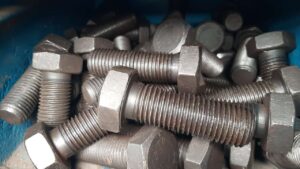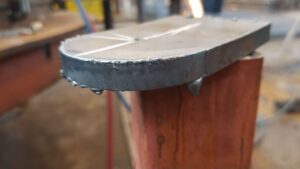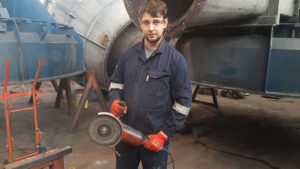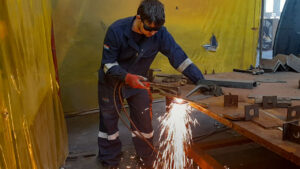An angle grinder and a cutting torch are the two main methods of cutting steel in the metal industries. Where you can use an angle grinder you can almost always use a cutting torch, but there are still situations where a grinder is preferred or needed to an oxy-fuel cutting torch.
Angle grinder vs cutting torch table
Angle grinder | Cutting torch | |
Startup price | Medium ($60-150 for a quality grinder) | Expensive ($200-250 without the gas) |
Running cost | Around $1-10 per disc | Gas refills are usually cheap |
Accuracy | Depends on skill | Depends on skill |
Cutting range | Large | Limited to low and medium carbon steel |
Ease of use (After training) | Easy but can be dangerous | Easy to use, hard to master |
Cut appearance | Neat/ Smooth | Jagged |
What are the uses of a cutting torch and angle grinder?
The main reason for both is to cut materials, but where an oxy-fuel cutting torch can only cut low to medium carbon steel an angle grinder can do a lot more than just cut metal.
An angle grinder use depends mainly on what type of disc is used. For example, you get different disc types for cutting metal and cutting wood. An angle grinder can also grind down, and polish different materials.
You can read up on how to use an angle grinder and how to cut different metal profiles with an angle grinder.
The difference between an angle grinder and a cutting torch.
The main difference between a cutting/oxy-fuel cutting and an angle grinder is that a torch uses two gasses to form a flame that is used to cut carbon steel. An angle grinder uses electricity or air to spin a disc/wheel that is used for a ton of different applications, like cutting or polishing steel.
An angle grinder has a lot more applications it can be used for. It can also be used for grinding or polishing metals, something a cutting torch can’t do. On the other hand, a cutting torch can be used to heat up metal for bending.
What is an oxy-fuel cutting torch
A cutting torch uses two gases to cut through steel. The gases consist of acetylene or LPG(propane) and pure oxygen.
These gases are mixed in the burning process to form a flame that heats up the metal to for cutting. A lever is pressed down to force a stream of oxygen that blows the heated metal away to form the cut.
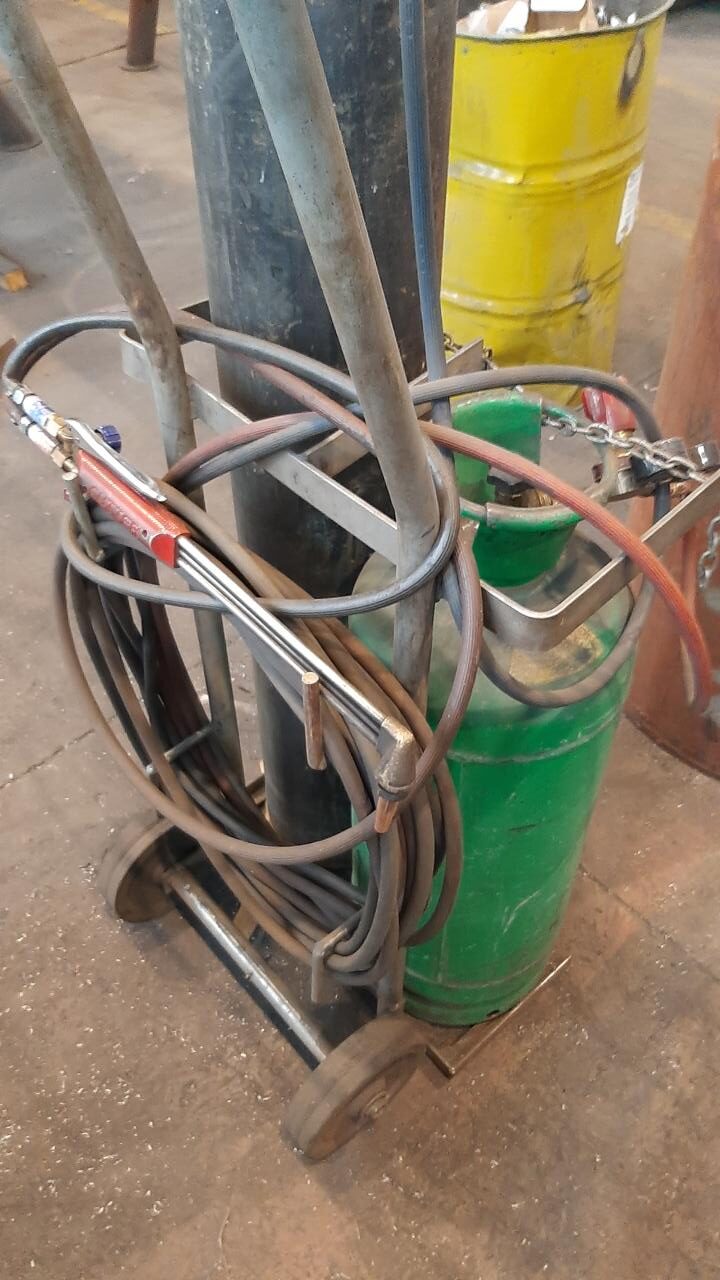
When to use an oxy-fuel cutting torch
A cutting torch can be used to cut low to medium carbon steel of any profile.
- Cutting in difficult to reach spaces
- Cutting any shape that isn’t a straight line
- Cutting notches
- Cutting out holes
- Cutting hard carbon steel
- Gas can be cheaper than the cutting blades
You can also use a cutting torch for gas welding.
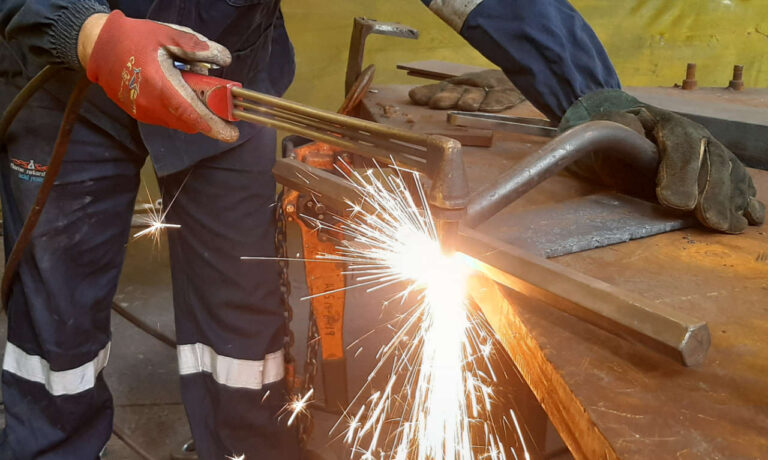
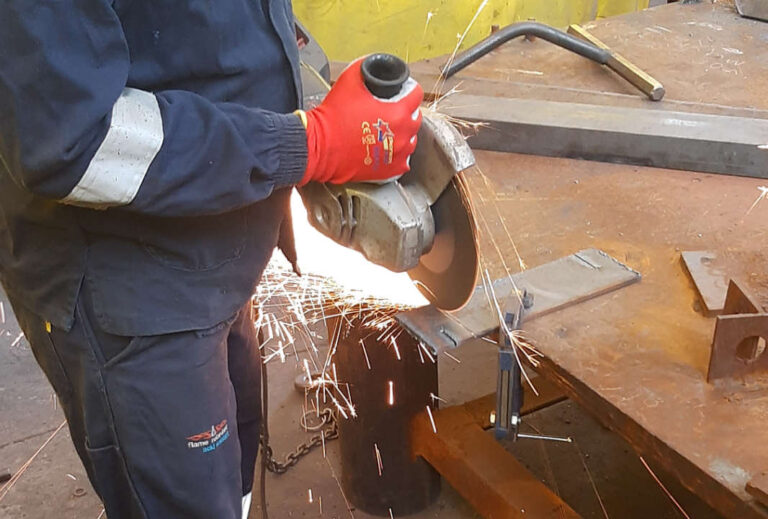
When to use an angle grinder
An grinder can be used to cut most types of materials but is limited to only straight lines.
- Cutting any stainless steel or non-ferrous metals.
- When the cut needs to look neat and clean.
- Cutting angles in angle iron
- Cutting thin/small metal profiles
- Cutting off excess lengths
These are just examples of cutting metal, but there’s a ton more uses for an angle grinder.
Conclusion
When cutting large or thick pieces of carbon steel you will be better of using a cutting torch because it is a lot easier and takes less time.
For thinner metal you should opt for an angle grinder because it is more accurate and with a cutting torch you might burn unwanted holes.

